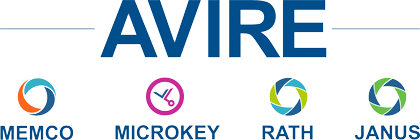Introduction: Why Are These Systems Necessary in Publicly Accessible Buildings?
The Americans with Disabilities Act (ADA) of 1990 revolutionized accessibility in publicly accessible buildings by mandating features such as ramps, at-grade building entrances, and elevators. While these enhancements ensured that individuals with physical limitations could access all floors, they introduced a critical challenge during emergencies: the means of egress.
In the event of a fire alarm emergency, elevators are programmed to return to the first floor and become inaccessible to the public, as indicated by signage that reads, “During a fire, don’t use the elevator, use the stairs.” For individuals unable to use the stairs, this situation poses a severe risk, effectively trapping them on floors above or below the level of exit discharge. This necessitates designated areas where they can seek evacuation assistance, known as Areas of Refuge (AOR).


Areas of Refuge and Two-Way
Communication Systems
The International Code Council (ICC) determined that AOR must exist in non-sprinklered buildings to provide temporary refuge for individuals during a fire. These areas are often located in stairwells or elevator landings and must comply with specific requirements:
Space Requirements: Per the International Building Code (IBC), AOR must have at least a 30” x 48” floor space for each person, with one space required per 200 floor occupants. This space must not obstruct the means of egress, and the travel distance to the AOR must not exceed 200 feet.
Two-Way Communication: A two-way communication system is required in AOR to enable individuals to call for evacuation assistance.
Signage: Proper signage identifying the AOR and providing instructions must be in place.
In fully sprinklered buildings, the ICC allows the entire floor to serve as an AOR due to enhanced smoke and flame control. In these buildings, two-way communication systems must be located at the elevators or elevator banks on each floor above or below the level of exit discharge.
Requirements for Two-Way Communication Systems
The requirements for two-way communication systems are detailed in several building codes and standards, including the IBC, NFPA 72®, NFPA 101, and UL 2525.
Battery Backup: The 2022 edition requires 24 hours of standby power plus 4 hours of full alarm notification activation, with a 20% safety margin.
Supervision: All communication pathways and power supplies must be monitored for integrity, typically by the fire alarm system.
Survivability: The pathway survivability must match the building’s construction. For buildings requiring a level 3 survivability, a 2-hour CI or CIC rated cable may be necessary unless installed in a 2-hour enclosure.
AORs: Buildings with designated AOR must equip these areas with a two-way communication system.
Elevator Banks: Two-way communication systems are required at every bank of elevators on floors above or below the exit discharge, with exceptions for floors with ADA-approved ramps, service, freight, or private residence-only elevators, and I-2 or I-3 occupancies.
UL 2525 (NFPA 72®, 2022 Edition)
Off-Site Communication: The system must be able to call off-site with two-way communication, identifying the building and call box location before the voice connection.
Call Prioritization: Calls must be displayed at the master station in order of priority, with the oldest call first.
Hands-Free Communication: Call boxes must provide hands-free two-way communication and have an ADA-approved push button, with at least a 70 dB audio output.
Monitoring, Installation, Inspection, and Testing:
Monitoring: These systems are typically monitored by 24/7 monitoring companies that handle voice calls for help. Some jurisdictions may require direct calls to 911.
Installation: Electrical contractors or low voltage specialty contractors usually install these systems.
Inspection: Initial inspection and approval by the Authority Having Jurisdiction (AHJ), often the Fire Inspectors, are required.
Testing: Annual testing is mandated per NFPA 72® Inspection, Testing, and Maintenance table 14.3.1.
Where Are These Systems Required?
Occupancies: All occupancies, except I-2 and I-3.
Building Rise: Any building with one or more floors above or below the exit discharge, including single-story buildings with non-accessible means of egress (e.g., warehouse buildings).
Jurisdiction: All states have adopted at least the IBC 2012, which requires two-way communication systems in all publicly accessible buildings fitting the above criteria.
Conclusion
Ensuring the safety of all building occupants during emergencies is paramount. Two-way communication systems in Areas of Refuge and at elevator banks play a crucial role in providing necessary assistance to individuals with physical limitations. For more information or to install AOR systems, contact RATHTM by AVIRE today.




